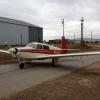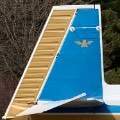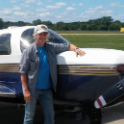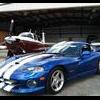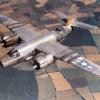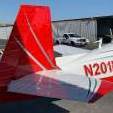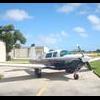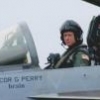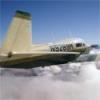Leaderboard
Popular Content
Showing content with the highest reputation on 02/07/2016 in all areas
-
Went and looked a M20k inSacramento yesterday, ( the forth one so far) Loved it, Bought it. Goes to Lake Aero next week for a PPI and then home to KEKA. It's a 1984 with King Silver Crown system, 2260 TTAF, 1140 SFRM. Last 20 annuals at Top Gun with one at WilMar. Pritch "Where the Redwoods meet the Pacific Ocean"8 points
-
An update to what's been done to N134JF since I bought it. Exten$ive annual New shock discs, oxygen bottle with boss gasket, new mag, new exhaust pipe, vacuum pump (preventive), Concorde battery, fix the Trim indicator, send the JPI off for rebuild (LEDs were starting to go), etc, etc. The JPI-EDM700 rebuild was the deal of the century. The original was a 2-1/4" and the LEDs were going bad. It was put into a 3-1/8" hole with a spacer around it. I called JPI to ask how much to replace the display in mine ($275) and then how much to upgrade to the larger one ($300), but she told me that if I upgraded the whole cost would be $300 plus shipping both ways. Done deal!. (Now i just need to find some little black plugs to pop into those small holes at the corners.) The interior was pretty faded, and the plastic was getting yellow. So Hector from Aero Comfort has re-done the interior - just getting ready to install. All panels are covered in very light gray ultra-leather, new carpet, seats, windlace, placards, recovered glareshield, etc, etc. Here's the old panel just as it was from 1993: Here's the new panel (Avidyne IFD540, AXP340 Transponder, MLB 100 ADS-B in, New Bluetooth audio panel The engine needs new baffle material and at some point the left tank will need to be stripped and sealed. (EDIT: It turned out that all the left tank needed was a patch. Dugosh did that for me)5 points
-
Yesterday was a beautiful day for flying in South Florida, albeit a bit windy. A cold front had just passed, and the barometric pressure was 30.24". We practiced some approaches with 35 kt crosswinds, and 90 degree crosswind landings 15G25. We also got gas at KFMY. Note the beautiful clear blue sky. (Fuel price isn't so bad either!)4 points
-
Should start to see the new Mooney Summit site by the end of this month. I'm still working some backend and internal logistics.3 points
-
I don't get 2K a minute climb very often, when climbing at cruise climb, but can personally attest it will still be EASILY climbing at 1K a minute when leveling at 24K. Been there, done that, at gross. This ain't no Comanche!3 points
-
Seat belt. I pull one of the front seats forward far enough to loop the seat belt on the yoke.2 points
-
Now that you've included a larger picture, that's a nice paint job! If I squint, that's exactly what your C looks like, except for the oversized back window. But I must say, I'm not used to seeing people flying their plane wearing a coat and tie . . .2 points
-
If it uses regular hex nuts to hold the cylinders on then it is wide deck. Narrow deck uses an internal Allen wrench style nut.2 points
-
Nah, I love them all. When I owned my first Mooney back in the 90's, the love of my life was the red and white TLS in the advertisements (see below). At the time I couldn't afford an F, let alone a J or M, so I learned to love my C. Now I'm on my second C, and I have to say that as the simplest Mooney (carburetor and Johnsom Bar) it is just barely more complex than a C-172 for just buzzing around for fun. (drool)2 points
-
2 points
-
We can discuss and analyze vertigo and it's causes until the cows come home. We can minimize it, and yes, head movement and inner ear is what it is all about. Try to minimize the onset best you can. If you think you need to look down, then by all means, look down! The fact is, vertigo can set in at any time, and we need to be ready regardless of when or why. Trust the instruments, cross check to make sure nothing is wrong with the instruments, and ignore the false signals from your brain telling you to do otherwise. Fly the airplane according to the instruments.2 points
-
Went for another milk run in moms grocery getter to KWLW pulled up to park next to a framilier looking TLS can't be too many of those around Dave was having lunch with Jcollier (252 vs 305) fame. When we got back there was another parked next to us with a third over at the fuel rig. After landing at home as we were getting set to leave a nice looking white with red came in over the numbers. Really happy with my flying today.2 points
-
Ummmm - I guess I did. Sorry Jack. Forgive me. I fly a rocket. :-) I did say you beat me on transcontinental flights for your miserly fuel burn. SO my insult of your airplane was clearly a compliment in disguise!2 points
-
2 points
-
Ditto - just yesterday I got two close traffic alerts in the Washington DC area (outside SFRA) Each passed within about 200 yards and +100' I probably would not have seen them without the alerts via ADS-B (GDL88). It gets your attention when the stern voice intones "TRAFFIC" in your headset and the yellow blob heads your way on the G500 screen.2 points
-
This is not a Mooney (soon) but I recorded my first flight. Lots to learn about the software still. It's amazing how critical you are of your own flying when watching. Im using Final Cut Pro on a Mac. Tim1 point
-
Couple of years ago I was leaving New Orleans Monday after super bowl for KSAV flying form a small field just south of KMSY approach kept me below 3000 for about 30 miles before they cleared me to 110. Yes KNEW is a made house when the Superbowl or Final four are in town but glad they are here.1 point
-
Two or three parts to this cooling challenge... 1) Lack of instrumentation: - The singe CHT and EGT sensors. - the small analog gauge on the far side of the panel. Hard to read with any accuracy. - EGT gauge has minimal information beyond where peak is and how many degrees ROP for one cylinder. - No FF instrument on most Cs, until recently. Hard to tell if the second carb jet is on or not. Even the fuel level is hard to use to determine fuel used during the climb. - Oil Cooling: oil is used for cooling. The same instrument challenges apply here. Small and analog. How well the oil radiator is working and its effect on CHTs can be a little unknown. 2) Air cooling: Dog house design and condition. Air doesn't like to flow smoothly in square channels and boxes. It has a tendency to escape out of flowing through the areas that you want it to flow through. 3) Fuel cooling: Full throttle FF is near 2X cruise FF for most NA Mooneys. - For My IO550 30+gph and 15gph roughly speaking. - For my O360 10-12 gph in cruise sort of. I don't remember getting an accurate measurement of FT FF. If I ever go back to an M20C... 1) JPI or equivalent. 4X EGTs and CHTs. Imagine knowing your GAMI spread for a single carburetor? How loose or tight is it? 2) FF and Carb temp on the JPI as well. Digital fuel level sensors just because... 3) Updated Dog House/cowl closure design with good Maintenance. Update M20C cowling design is 'In progress...' 4) Just add fuel injection....and war power intake mist water cooling I would think keeping cylinders cool would greatly minimize the carbon build up that can lock exhaust valves in place. Having this much data would give some insight to seasonal differences that you may want to be aware of. Ross, how does this sound?...Does anyone use the blue box method of mixture control for a carbed engine climbing at FT. Blue box EGT range is 2-300°F ROP? Do the O360 EGTs go that low? Just my thoughts of a PP, not a mechanic. Best regards, -a-1 point
-
The problem with all these solutions is they lock the controls but don't prevent the forces that act on the control surfaces which then transit through all the hardware between the surface and the associated controls. I use the seatbelt if left outside but luckily I am hangarred at home. With my Cessna I had 2 long pieces of very stiff hose with a cut along their length which I would bridge the ailerons to the flaps to anchor them together. Worked very well1 point
-
I would hazard a guess it is due to fuel/oil vapour condensing out after shutdown and falling to the lowest point1 point
-
It is simple to put into practice. As simple as learning how to land. His point is that it is a matter of training experience and the goal of the earliest phase of instrument training.1 point
-
I think it's a mind over matter situation. I once was turned around on a climbing departure procedure. I leveled off and noticed I was drifting on the DG. Told my self to knock it off or I would be dead. That solved it for me. But the issue is noticing the error, before it really messes with you. I like to look for movement of the gear by looking on the floor first. Then checking the light. A lot can be learned from the realitive motion of the gear vs just looking for a light. And, Anthony... Geez, I think that would make anyone sick! I can still do everything in an aerobatic airplane I can think of with out loosing it. However, I'll jump on the girls glider in the back yard with them and only do about 10 swings... I'm done! Lol. Best, -Matt1 point
-
1 point
-
It's also possible you may have a small air leak between the pump and tanks. The gasolator has been known to leak.1 point
-
What will it say in the POH if it is a maximum certified ceiling vs service ceiling?1 point
-
I guess we are still on track, marauders girls haven't showed up yet.(I wasn't going to bring it up but the problem seem to be solved now.) You are correct. Some autopilots can handle this, it's the same as having a crosswind. Some autopilots seem to struggle, it may be some internal settings. In an A36 I flew for a customer I had to set the course pointer five degrees left every time to be on course, otherwise it would happily fly one dot to the right every time.1 point
-
Hey Nick, Welcome to your first post on MS! I am looking forward to the new site. With the dream of being in attendance. Best regards, -a-1 point
-
TA, have you seen Tom's turbine project? You machine builders are really interesting people! I have my hands full for a short period of time with a simple NA engine. 2kfpm...310hp! CUJet, where are you and your Stemme located? Best regards, -a-1 point
-
When I decided to move from my 83j to a Rocket eight years ago, it was because I wanted to go as fast as I could....I wanted a rocket :-) hot rodder by nature. Then I started looking at them and although NOTHING is wrong with the panel etc.....if I was "upgrading" read spending more $$$ I didn't want to be looking at the same old panel just like my 201 and my 201 had seven year old paint and interior that I had done.....it looked NICE. Everything I looked at didn't look near as nice and had the same old panel, many looked down right ratty compared to my J. That combined with a couple well known Mooney folks steering me towards a factory turbocharged airplane convinced me that I could give up a little speed for a newer airframe/panel/goodies, factory designed etc. Now eight years later I'm still happy with my decision. A Bravo WILL burn more fuel than a K. I figure 20gph and come close to burning that too (but paid $3.18 gallon today) Neither of the other two are long bodies. Bravo seats don't down fold down....they come OUT and they both come out in one minute, back in in two minutes ! I'm talking plenty of room to stretch out for the night, I have. Frequently I pack that huge area full. From a couple full size road bikes to the dog crate or enough supplies to self sustain for a week in the Bahamas. I would not give up the room of my long body, ever. Normally I have one or neither rear seat in my airplane. All that said, once a guy on my field asked what the best airplane was for his mission. Him and his wife, multiple trips to Utah from Georgia and the normal Florida, Bahamas etc. My reply was a 231 ( of course 252 is the best in that group) mainly because of fuel burn and still having the altitude capability. I don't miss not having TKS living in Ga. And rarely flying up north. I don't want and so far will not/have no need to fly in those conditions. (Daughter has moved to Baltimore so that's getting close) Although TKS is "supposed" to book $40-50k more, watching Bravos on the market that does not seem to be true. You might find a deal with TKS now days. GA to Utah one fuel stop, light headwind. Ga to Vegas two stops light headwind but it was close to one stop. Return trips, light tailwind always one stop. I suggest you look at, sit in and investigate all of them. You can spend all the money in the world to make the outside pretty, the panel perfect but you can't stretch a K/Rocket :-) Like said above, most owners think they have the best/perfect airplane....and you know what ? All of them (me) are right. With any of them you can't go wrong !1 point
-
I sure hope to, my first one, a 63C was nicknamed Baby, this one will be Big Brother.1 point
-
Left house at 4:20 pm get plane out take for a lap around the pattern (changed oil last week, needed to make sure all was good) Land and refuel. Clean windows, polish spinner, Returned to house at 5:10 Not everyone can just go fly ready to launch tomorrow over to Lufkin to see my former flight instructor who now flys planes in Alsaska1 point
-
That corresponds with the SI as almost all the O360s are listed as potentially having 7/16 valves, IOs, not so much.1 point
-
Joe -- this is why I was throwing out all those suggestions. When it comes to these avionics, some weird stuff can happen. Look at my YouTube site to see more examples. The second video I shared was caused by a switch. I didn't understand at the time that when the Aspen loses communication with the AP, it goes wing level. There was nothing wrong with the STEC, there was nothing wrong with the Nav, it was a stupid switch that closed when it should have stayed opened. The key that I didn't pick up immediately was the loss of the flight director on the HSI. You see it show up in the video for a few seconds. When that went away, it was telling me the AP lost communication with the Aspen. I just didn't see it until I recorded it and played it back a few times. Your flux switch was probably making intermittent contact and was sending the correct heading to the HSI periodically. This would explain the oscillations. I don't know enough about the BK HSI but I suspect it needs to know the correct heading to provide correction to the AP to stay on course for a localizer. If it doesn't have the correct heading information, I don't know how it knows how to keep the CDI centered. Take a look at this picture. The course it should be flying is 158°, the actual heading is 163° to compensate for the wind coming out of 195° at 21 knots. The ground track is the turquoise symbol at the head of the CDI. These avionics can do crazy stuff. Glad you figured it out. In my case I periodically exercise the switch. Sent from my iPad using Tapatalk1 point
-
Okay this is going to sound lame but I think the problem is fixed. We overhauled the Kcs55 and the remote gyro. Two thousand dollars later still the same. I think I mentioned earlier the Hsi was oscillating back and forth three degrees. That's what started this whole adventure. Well started noticing the slaving switch was intermittently not working. Shot some contact cleaner in there and all is back to normal. Really???? Shot the ILS today and it was dead nuts! WTF? One more thought or question. If your HSI is off because your flux detector needs some adjusting , when you set the inbound course won't it be off the amount of the deviation?1 point
-
100 % correct. Offer scrap price for it, I like to start at $12,000. I'll go 12 on the green and white C.,, no on the one that is a time capsule with the glove box. I bought mine out of annual, sitting for some years. I wanted a project. I am having a good time working on it. Oops, maybe I got a Rutland Reindeer cause I bought it sight unseen.But I'd do it again. If you go see an airplane , you should expect to fly it. The seller should expect this. If not it is scrap.1 point
-
Went flying about the same time as you. Beautiful. 37° F in Michigan today, unbelievable, with mostly blue skies and smooth air at 2500' AGL. Didn't even have to pre-heat, but did anyway. Just became a habit for February in Michigan. Edit:. Best thing about the M20B/C/D/G? Choice between going on a trip or just gettin' up and fartin' around. Try that in a Bravo or Acclaim.1 point
-
He even got to fly a J model yesterday. He was wondering what happened to the acceleration and climb performance he's used to? Clarence It's in the gas tank. Sent from my iPad using Tapatalk1 point
-
The traffic has always been there, you just never saw it or collided with it. The GDL-88 is a real game changer - and eye opener (pun intended).1 point
-
Clearly I agree and I chose the rocket. And love the power - to climb, to cruise fast. But when I bought it, I told myself exactly what you just said, that no problem I could just fly at very low power to mimic the smaller engine fuel burn. But darn it if I cannot seem to make myself actually do it. Go fast! I do think that even pulled back, to match the 252 native speeds and fuel burn - I tend to burn maybe 1 gal per hour more which I attribute the general innefficiency of larger cylinders.1 point
-
Here is a Stemme S10 motorglider above Everest! It has a 30,000 ft service ceiling! (yes, we operate one) As for which aircraft, the answer is simple. The most capable one. You can always throttle back to smaller engine power settings for long range cruise. So the Rocket is the correct answer in my opinion.1 point
-
I would think real hard about whether you want to fly above 24K. I routinely fly in the flight levels, and have done many trips at 23k and 24K. There is little room for error as to keeping O2 sat's where they need to be. My wife pulled her O2 off for less than a minute to reach back in the luggage area and grab something and she was getting hypoxia symptoms before getting her O2 back on. I usually only go above 18k to 19k if there is a real considerable benefit in winds, or I need to get over weather. There's just a lot less time to determine hypoxia issues as you fly above the teens.1 point
-
That's great news! I really liked hearing what you thought AOPA could do better. I agree with you! The "pre-Baker" years were tough. But there's been a lot of positive change in the past 24 months. Any time issues come up or you have a question, like the things you and I discussed this morning, please let me know. And that goes for all the folks on MooneySpace. If your an AOPA member, I (and everyone at AOPA) work for you! The new leadership within AOPA understands that. Doing right by our members and providing the best Media, Safety content and Advocacy efforts along with personal service it what we are committed to do going forward.1 point
-
Same here George. I'm renewing my expired membership just because of you. Sent from my iPad using Tapatalk1 point
-
But aren't those published ceilings also legal statements too? Legally a 252 whether rocket converted or not is certified with a 28,000 ceiling, or better - meaning I presumed they tested the ceiling to be 28,000 or greater so this is the legal operating envelope - even if the actual engineering ceiling which occurs when the plane will no longer climb at least 100fpm must be much greater since reports are that a rocket was being tested for certification to 31,000 but they gave up for the legal hassle. Its really an academic discussion - a 231 rocket is not missing much if it is legally limited to FL24 but a 252 rocket is allowed to FL28. I was up to FL24 once, and I can attest that it climbs significantly in excess of 1000fpm there with no problem.1 point
-
My panel light is visible, but it's not green, it's white. The floor indicator light is always failing and then it's very hard to read without the light, the plastic cover is somewhat opaque after years of being stepped on.1 point
-
Now you get to paint a little balloon silhouette by the pilot's window. Four more and you're a balloon ace. Now you're going to go looking for them!!1 point
-
Nick is working on the website as we type. We will have it updated soon, and {shameless plug here} it will have a page for all of the wonderful sponsors and donors that help make it all happen. Abe did a great job getting the web up last year, but had to step back this year because of personal time constraints of his growing business, so Nick offered to pitch in again. Thanks Abe, your contributions to the Mooney Summit, Inc have been invaluable. Your input and vision have helped us provide deliverables we once only dreamed about. Nick is the person who put the registration site up while I was in Rehab a couple years ago and empowered us to have Mooney Summit II. Welcome to our team, Nick!1 point
-
1 point
-
Some thoughts from a Bravo owner (that moved up from a J in December, 2013): Pro's: The long body of a Bravo adds a lot of baggage area. Combine that with the fold down rear seats and you probably have enough volume (not useful load) for 2 of Maruader's girls Long body is a bit more stable in turbulence I think the long body is easier to consistently produce better landings in Bravo's up until approximately 2000 models have room for 3 rows of instruments - you can fit a lot of instruments/avionics in that panel. Caveat is a shorter windshield. All Bravo's have built in o2 with 115 cubic foot bottles. 2 people can go from CA to NY and most of the way back on one fill at 18,000' Bravo is a production airplane - some people prefer that over a heavily STC'ed plane. I don't really care either way but it may make a difference at resale. Bravo's have a Lycoming engine (ok, flame suit on....) <<I think>> more Bravo's make it to TBO than Continental equipped planes. This may be due to the "wet head" design. DO NOT fly your bravo by the POH numbers or you will be replacing cylinders, exhaust and turbochargers on a very regular basis! Bravo's have 2 80-amp alternators and 2 batteries. The also have both a mechanical and backup electric vacuum pumps. A lot of redundancy is nice - especially if flying IFR You can put 106 gallon's of fuel in the Bravo, 100 of which is useable. It can have pretty long legs if you fly in an economy mode. My wife and I can depart with 106 gallons and pretty much all the baggage we want and still be with W&B limits. Note: if you fill extended fuel tanks in any Mooney model you will not get 2 medium sized people plus baggage in the plane and be within W&B limits. But also remember that the human bladder is much smaller than extended range tanks . My plane specific My engine is fairly easy to keep the temps under control My plane trues out at 210 KTAS @ FL210 on 18.5 GPH. This is excellent performance. I have a useful load of ~1015 lbs. Bravo Cons: Fuel burn: 16.5 - 18.5 GPH - better than a rocket, not as good as a 252 Engine replacement costs - YIKES Bravo: http://www.airpowerinc.com/productcart/pc/engines.asp?searchParm=tio540af1b&catID=33 Rocket: http://www.airpowerinc.com/productcart/pc/TCEngineDetail.asp?catID=69&prodID=25112 252: http://www.airpowerinc.com/productcart/pc/TCEngineDetail.asp?catID=69&prodID=24863 Bravo engine doesn't run LOP (except Awful_Charlie's plane) Bravo engine's typically don't run as smooth as the Continentals. I think the Bravo is an excellent plane and I am really glad I went with it. I don't have any time in either of the other models you listed so I really can't offer an opinion on them. Let me know if I can provide any additional information. Well, I guess that's all I have to say so best of luck! Dave1 point
-
Cs can add fuel flow to a JPI display. Both FF and Cht/EGT would be excellent additions to the existing hardware! A 930 could replace existing instruments that are crummy from day one... I would be inclined to add it to the lower cost 700 series if my budget was tight. Best regards, -a-1 point













